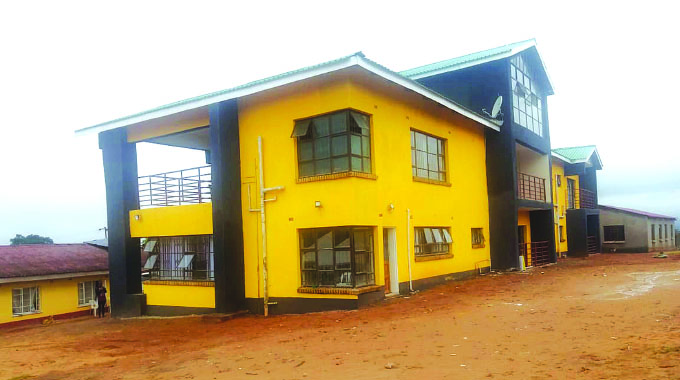Electronic filing comes to top courts

Herald Reporter
Electronic filing of all documents in the Constitutional and Supreme Courts and the commercial division of the High Court is now possible with amendments to the rules of these three courts gazetted yesterday.
The three statutory instruments implement the new rules made by Chief Justice Luke Malaba as head of the judiciary and the two higher courts for those courts, and by the Chief Justice and the head of the High Court, Judge President Maria Zimba-Dube, for the commercial division of that court. The statutory instruments were gazetted by Minister of Justice, Legal and Parliamentary Affairs Ziyambi Ziyambi.
Only the amendments for the commercial division give a date for them coming into operation, May 1, and that becomes important because of the last amendment to each set of rules: “Six months after the coming into operation of the electronic filing system, the court shall become a fully paperless court, save in exceptional circumstances.”
Authorisation for going back to paper can only be given by a judge of the Constitutional or Supreme Courts for each of those two courts, or by the senior judge assigned to the Commercial Division for that court.
At the moment papers can be filed in all three courts either in hard copy or electronically with the Commercial Division taking the lead in the count down for the paperless court.
Besides the e-filing procedures, the new rules also allow a virtual court platform. This allows in tightly controlled circumstances litigants and witnesses to be physically somewhere else, usually in a court room nearer where they live or in other approved places, with a police officer always present.
Most of the amendments to the rules change definitions of things like serving documents to include the e-version with the core of the system being the new Integrated Electronic Case Management platform.
Litigants have to create an account on this platform, following all the directions given, and then access that account over the internet. This is the platform that will be used to send documents and pleadings and receive them, and the extra rules lay down how transmission is to be proven if there is dispute and how documents are to be electronically signed.
The rules go into a lot of detail on these electronic documents, for example they have to be combined into a single PDF file with consecutively numbered pages for each submission, and the pages identical to the hard copy that must be retained for record purposes. The rules go a little further; litigants have to write in 12pt Times New Roman font with 1,5 line spacing. The judges want easy to read documents with no fancy typography.
Special care has been taken to ensure that documents sent are received. Besides an e-mail address those using the system have to provide a back-up e-mail address plus a mobile telephone number provided by one of the three Zimbabwean mobile networks. If, in spite of all this, you do not reply it can then be assumed this is deliberate.
The virtual courts system has been designed to make the giving of evidence in a reasonable number of cases easier for witnesses. The platform is being set up by the courts, and generally the off-site locations will be courtrooms close to where the witness lives. The possibility for other venues exists, such as a lawyer’s office, but here provider will have to buy the required hardware and software.
Rules are in place for these off-site locations. A police officer must be present. Where there are at least two terminals the two sides in a dispute must use separate terminals but where there is only one terminal then there are rules over who can be sitting next to the person giving evidence.
The three courts starting the electronic filing and virtual courts invariably have litigants and appellants legally represented, and lawyers are expected to be totally familiar with the court rules of these courts as a matter of routine. This will make it easy to implement the system.
At the moment all criminal courts, both at magistrate level and the High Court, remain outside the electronic systems and carry on as they have been doing, although there are plans at some stage to allow routine remand hearings from remand prisons.
The heavily-worked lower-level civil and commercial courts presided over by a magistrate also remain outside the electronic system. These deal with things like maintenance claims, smaller debts, unpaid rent and the like and many litigants and those being sued are not legally represented. Presiding magistrate usually take an active role to find out the facts, ordering people to come back the next day with the required receipts and payslips for example, before making a judgment, rather than relying on just what is said by unrepresented people.










Comments